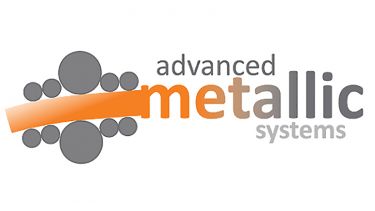- Research carried out by Josiah Cherian Chekotu, AMS CDT PhD Researcher, explores potential L-PBF additive manufacturing techniques best suited for processing NiTi to work at high temperatures (70-120°C).
- Results of this study will subsequently assist researchers in the construction of more complex shapes using L-PBF to determine the most efficient NiTi SMA structures for green energy applications.
- From this, the NiTi SMA core can be manufactured as per requirements for existing energy products, with the outcome being to replace the environmentally harmful agents with zero-carbon and pollutant-free alternatives.
- Many technologies are high-cost in providing green solutions, which makes this research key for industry. Keen to identify cost-competitive solutions including an eco-friendly quotient, L-PBF manufacturing processes have the potential to bridge the gap with the ability to cater for mass-scale production.
A project led by Josiah Cherian Chekotu, PhD Researcher in the Advanced Metallic Systems Centre for Doctoral Training Programme at the I-Form Advanced Manufacturing Research Centre, focusses on the development of Laser Powder Bed Fusion (L-PBF) techniques to process nitinol (NiTi) with retained shape memory properties. Currently, there are several variations of alloys with shape memory properties, but NiTi alloys have the best shape recovery performance, durability, and corrosion resistance, as well as being commercially affordable and readily available.
Laser Powder Bed Fusion (L-PBF) has gained extensive attention in the field of metals processing for complex shapes, especially for NiTi shape memory alloys (SMAs). SMAs are a unique class of alloys that can ‘remember’ their shape and are able to return to the shape even after being bent, simply by being heated.
This research aims to determine the optimal properties of SMAs for green energy applications by monitoring material responses under high temperatures. The Laser Powder Bed Fusion method has been selected for this study, as L-PBF provides a unique way of fabricating intricate designs that are not possible by conventional manufacturing methods. This makes the process ideal for exploring methods to develop NiTi SMA structures with increased intricacy.
This research explores potential L-PBF additive manufacturing techniques best suited for processing NiTi to work at high temperatures (70-120°C). Results of this study will subsequently assist researchers in the construction of more complex shapes using L-PBF to determine the most efficient NiTi SMA structures for green energy applications. This application will result in long-term sustainable impact for the cooling and refrigeration industries.
Prof. Dermot Brabazon, ROI AMS CDT Director, Dublin City University; Prof. Russell Goodall, UK AMS CDT Director, The University of Sheffield; and Dr David Kinahan, Assistant Professor, Dublin City University, are also involved in the research development.
Why is this Important?
Cooling technology, used in refrigeration and HVAC [Heating, Ventilation, and Air Conditioning] systems, currently relies on Vapour Compression Cooling; a process that has dominated the market for 150 years. However, Vapour Compression Cooling has significantly reduced in efficiency, and the process uses chemical refrigerants which are highly polluting.
The cooling industry currently accounts for approximately 10% of global CO2 emissions, which is 3 times higher than shipping and aviation markets. Even more alarmingly, HFC-134a, a potent greenhouse gas found in domestic fridges, has a global warming potential of 3,400 times that of CO2. In fact, The Kigali Amendment to the Montreal Protocol - an international agreement to gradually reduce the consumption and production of hydrofluorocarbons - was signed by 150+ countries committed to reducing HFC consumption by 80% by 2047.
With climate change bringing about rising temperatures, the demand for cooling appliances is set to increase further, highlighting the need for green alternatives.
Underpinning Research
Solid-state elastocaloric cooling has been under development for the last decade and is deemed the most viable option for alternative cooling technologies. SMAs are found to display a significant elastocaloric cooling effect. How the SMAs deform or change their shape [depending on temperature] and return to their non-deformed shape when subjected to the opposite end of the temperature scale, is a result of exerting stress on the metal to change its properties.
This process produces the cooling or heating effect which can be used in domestic and industrial heating and cooling; in waste heat recovery to make use of low-grade heat; and in energy storage and renewable energy to help lower energy costs and pollutant emissions.
However, in terms of research, the main focus in this area has been conventionally manufactured NiTi SMAs and the effects when undergoing heat treatments. Research has also been carried out on NiTi with a higher Ni content, which pointed towards an austenitic NiTi with superelastic properties. Little research had been published on utilising a L-PBF method to process NiTi SMAs.
Current Findings
Drawing upon the findings of existing studies, a design space was formulated to 3D print (L-PBF) NiTi SMAs with a higher Ti content to obtain samples inherent with shape memory capabilities [martensitic NiTi], rather than austenitic NiTi. Following this, results were quantitatively assessed to measure correlations of L-PBF parameters with material response.
This resulted in Josiah’s research being published by MDPI in the journal ‘Materials’ titled ‘Advances in Selected Melting of Nitinol Shape Memory Alloy Part Production’ in 2019.
Following this publication, Josiah Cherian Chekotu has published two additional papers [in 2022] detailing major findings relating to:
- Material response for as-fabricated L-PBF samples to the L-PBF parameters
- Phase transformation properties
- Ni evaporation during L-PBF process
- Phase compositions
- Micromechanical properties of L-PBF samples
- Thermal expansion of NiTi under austenitic and martensitic phases
- Effect of porosity in NiTi SMA structures on core performance for heat pump [exchangers] and shock absorptions.
Although the project is still ongoing, significant findings have been identified through the research carried out so far which makes for a promising outcome at completion, as demonstrated through the following publications.
Research published by Science Direct in the journal ‘Materials & Design’ titled ‘Control of NiTi Phase Structure, Solid-State Transformation Temperatures and Enthalpies via Control of L-PBF Process Parameters’.
Research published by MDPI in the journal titled ‘Materials’ titled ‘Influence of Structural Porosity and Martensite Evolution on Mechanical Characteristics of Nitinol via In-Silico Finite Element Approach’.
I selected the Advanced Metallic Systems CDT Programme for my doctoral training, due to the multiple materials technology options available. This, and the added element of personal development plans and mini-projects included throughout the duration of the programme, interested me, as I felt it provided a more well-rounded approach to studying. I was a bit nervous when I enrolled into the AMS CDT Programme in 2019, however, the route paved by the Management team was very supportive. This allowed me to achieve all the milestones, without feeling overwhelmed.
The orientation sessions, visits to industries, labs, and research centres, really helped me in the project planning stages of my research work. I’ve also had the opportunity to visit partnering Universities of Sheffield and Manchester later on in my studies. Although I wasn’t able to travel or access facilities for some period of time during the COVID-19 lockdowns, the team ensured the continued progress of research works, and the welfare of students, through other avenues which was great!
Now that I’m nearing the end of my PhD journey, I can look back and happily state that it was a great privilege to pursue my PhD under the wings of the Advanced Metallic Systems CDT, I-Form Advanced Manufacturing Centre, and Dublin City University."Josiah Cherian Chekotu
AMS CDT 2019 Cohort | Dublin City University
Wider Impact
Results of this study will subsequently assist researchers in the construction of more complex shapes using L-PBF to determine the most efficient NiTi SMA structures for green energy applications. From this, the NiTi SMA core can be manufactured as per requirements for existing energy products, with the outcome being to replace the environmentally harmful agents with zero-carbon and pollutant-free alternatives.
Many technologies are high-cost in providing green solutions, which makes this research key for industry. Keen to identify cost-competitive solutions including an eco-friendly quotient, L-PBF manufacturing processes have the potential to bridge the gap with the ability to cater for mass-scale production.
Industrial benefits will relate to saved overhead costs and high throughput, through a faster and lower cost production rate. Through in-situ parameter tuning, a real-time quality assessment can be made, resulting in optimal quality production.
By significantly reducing GHGs [greenhouse gases] and polluting chemicals, pro-environmental action will also see a reduction in the sectors and users’ carbon footprint.
Next Stages
Currently, Josiah is carrying out testing to analyse the residual stresses generated during the L-PBF process, and how it is relieved via microstructural studies [See Equipment and Facilities].
Following this assessment, detailed mechanical full-field strain response analysis will be conducted along with the nanoscale response to mechanical stress.
The outcome of these works will assist both engineers and researchers in identifying the optimal L-PBF parameters and control route to process Nitinol, with increased focus on green energy solutions.
Equipment and Facilities
- Aconity3D MINI, Nano Research Facility, Dublin City University
- Further material characterisation testing was carried out through facilities at Dublin City University through the following techniques: Dilatometry; Scanning Electron Microscopy [SEM]/Energy Dispersive X-ray Spectroscopy [EDX]; 3D Optical Microscope; X-ray Powder Diffraction [XRD]; Vickers Microhardness Testing
- Differential Scanning Calorimetry, University College Dublin
- Residual Stress Analysis, currently being performed at the Middle East Technical University [METU], Turkey, and AFRC, The University of Strathclyde
- XRF [X-ray Fluorescence] is currently being conducted using the PANalytical Zetium, Royce Discovery Centre, Royce at the University of Sheffield
- Electron Backscatter Diffraction [EBSD] will be conducted in The University of Strathclyde and Open University, UK
- Nano Indentation and Atomic Force Microscopy [AFM] will be conducted in Nano Research Facility, Dublin City University.


